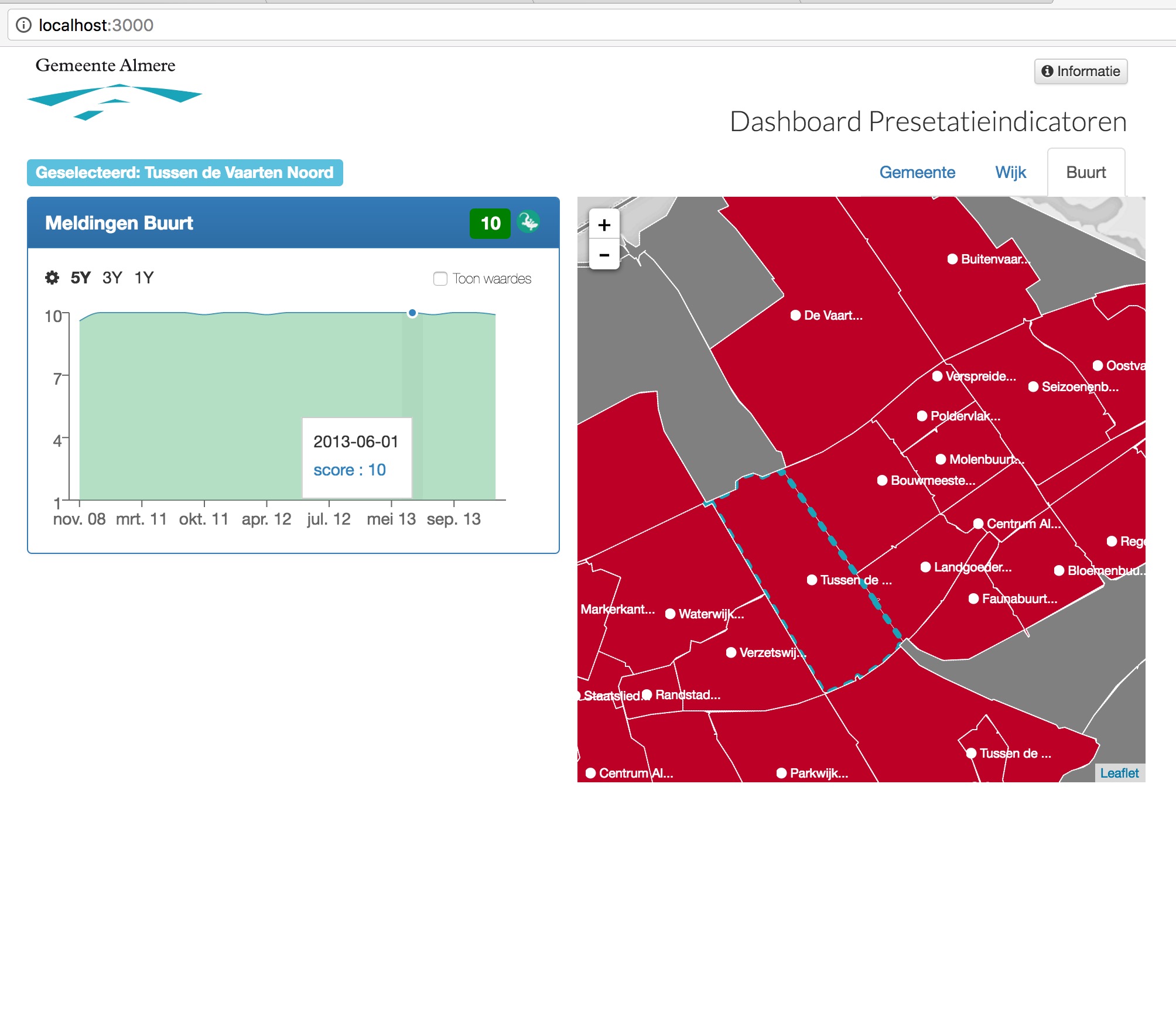kpi-dashboard
This is the 2nd iteration of the KPI prototype.
The main goal of this prototype is to connect it to the Lizard 6 API.
Demo
http://nens.github.io/kpi-dashboard/
Screenshot (August 2016)

Technical
-
Unidirectional dataflow (json-->App-->child-->child etc.) using Redux.
-
One source of truth (API), (mostly) stateless child components
-
React.js for application UI
-
CSS modules for styling
-
Talks to Django REST Framework
-
Linting via ESLint
Project installation / setup
Preparation
Assumptions: Node.js 6.3.1 and NPM 3.10.6 installed globally.
-
On OSX:
$ brew update && brew install node(or upgrade using$ brew update && brew upgrade node && npm install -g npm) - or just install using the official installer from nodejs.org. -
On (recent) Ubuntu:
$ sudo apt-get update && sudo apt-get install nodejs nodejs-legacy
Installing dependencies
Globally, install babel-cli: $ npm install -g babel-cli.
In the project directory:
$ npm install
EDIT due to problems with webpack do yarn install instead:
$ yarn installThis will install all thats needed to develop or build.
Note An npm-shrinkwrap.json file is included to ensure the right dependencies are installed.
Please re-generate it when changing dependencies in package.json.
Development
To start development, in the root of the project:
$ npm start
EDIT due to problems with webpack do yarn start instead:
$ yarn startThis will start Webpack in Hot Module Replacement (HMR) mode and will also create a source-map file for debugging. Open http://localhost:3000 in a webbrowser... Most changes will reflect instantly, or your console will tell you to refresh manually. Error messages will be shown in the browser as well, for easy debugging.
Dev trouble
If you get redirected to a login on dev, but this does not work, then I worked around it by commenting out:
if (data[0].pis.length === 0) {
window.location.href = /accounts/login/?next=${window.location.href};
}
You wil not get to run all features, but maybe just enough to test a small change (in my case).
Translations
The main messages catalog files will be generated automatically by babel-plugin-react-intl (link).
This catalog can be found under build/messages/components/COMPONENT.json and each of those files has a format similar to:
[
{
"id": "app.apptitle",
"defaultMessage": "Dashboard Performance Indicators"
},
...
]Use translate.js in the root of the project to generate a flat collection of translations:
$ babel-node translate.jsProduction
To build a production bundle, in the root of the project:
$ NODE_ENV=production webpack -p --config webpack.production.config.jsThis disables the HMR functionality and minifies the code as much as possible. Places index.html and bundle.js in dist/. Will propbably output warnings which you can ignore safely.
Releasing
Check if your deploy/ folder has a auth.json file with a github token.
To start off, make sure webpack has a built version in the dist folder
npm run buildThis creates a build in the dist/ folder.
To tag this as a new release and to add the dist folder to the release attachments you we use nens/buck-trap. It versions your repo and changes the changelog for you.
npm run buck-trapNOTE: buck-trap assumes:
There is a package.json.
You release from master branch.
There is a dist folder which will be attached to the release on githubReleasing hotfixes or patches
If a stable release is coming out release it and start a new branch for the stable release e.g.:
git checkout -b release4.0If stuff is fixed on this branch, the fixes can be rolled out as patches without affecting the mainline release track. To run buck-trap from this branch and to release the branch with its CHANGELOG.md
npm run buck-trap -- -b release4.0The fixes and the CHANGELOG.md would have to be merged with master, which might give some merge conflicts. C'est la vie.
If a release went wrong and you, don't worry just fix the error and run it again. It will bump the version again, but who cares.
Deployment
For the deployment of frontend repositories we make use of an Ansible script in the lizard-nxt repository. More information is provided in the readme file of lizard-nxt: https://github.com/nens/lizard-nxt/blob/master/README.rst Look below the heading "Deployment clients".
ESlint
The code is written in ES6 and compiled to regular JS with Babel.
Be sure to install ESLint support in your editor.
There's support for Atom, Sublime, Vim, PyCharm, Emacs and VSCode.